Home » Construction Blogs (Page 5)
Category Archives: Construction Blogs
AGC and Autodesk Launch Media Library to Boost Representation of Diversity in Construction
Images readily available for editorial use showcase women and people of color in construction to increase visibility in industry media coverage
San Francisco, Calif., June 29, 2021 – The Associated General Contractors of America (AGC) and Autodesk today launched the Construction Diversity Image Library, a collection of photographs for use by the media featuring diverse individuals in the construction workforce. The library will launch with an established collection of images and as part of the initiative, organizations from across the design, engineering and building industry are invited to contribute additional photographs.
In both 2019 and 2020, the annual workforce survey conducted by the AGC and Autodesk identified a steady and unfulfilled demand for more talent, with up to 80 percent of contractors reporting they are unable to find skilled workers. To fill the workforce gap and deliver on the growing call for more buildings, construction needs to attract and retain new talent.
The Construction Diversity Image Library provides editors and journalists with a resource to easily access imagery that showcases diversity in construction as it exists today and empowers the industry to appeal to new, diverse talent.
“The library is a valuable asset that provides media easy access to photos featuring various communities in construction,” said Jan Tuchman, editor-in-chief, Engineering News-Record (ENR). “It will help us represent diversity in our stories more generally so that hopefully more people can see a place for themselves in the industry – whether in the field, trailer or office.”
“Showing potential recruits that they will not be alone on the jobsite will make construction careers even more attractive to many people,” said Stephen E. Sandherr, CEO of The Associated General Contractors of America. “The Construction Diversity Image Library provides an invaluable tool for helping the industry recruit the kind of diverse workforce it needs to keep pace with future demand.”
To kickstart the library’s collection, Autodesk commissioned a gallery of photographs in collaboration with several AGC member firms. Autodesk will continue adding content, and other companies and associations that share a commitment to elevating diverse representation in construction are invited to add their own images to the library.
The new Construction Diversity Image Library follows on the heels of the AGC and Autodesk’s women’s safety harness grant program, and builds on a shared resolve to address workforce shortages, improve jobsite safety and boost diversity and inclusion in construction. At Autodesk University 2020, industry publications ENR and Construction Business Owner along with AGC member firms also participated in a panel discussion, “How the construction industry and media can work together to attract more diversity.”
“As the saying goes, you can’t be what you can’t see,” said Allison Scott, director of construction thought leadership, Autodesk Construction Solutions. “By increasing the diverse representation of construction professionals in the media, we can show that a career in construction is within reach for people who may never have considered it an option. Both Autodesk and the AGC are committed to celebrating industry diversity and encouraging more growth for the future of work in construction.”
Organizations interested in contributing to the library can do so here. All submitted images are for editorial use only by media publications. If used in editorial coverage, images will be credited to the contributing organization.
To learn more about the role that initiatives such as the Construction Diversity Image Library play in supporting industry diversity and inclusion, visit the Autodesk Digital Builder blog to read an interview with Henry Nutt III, chair of the AGC’s National Diversity & Inclusion Steering Committee. Autodesk also offers additional resources, events and conversations for those who want to get involved in shaping the future of construction on the newly launched “Advancing the Industry” webpage.
About the Associated General Contractors of America
The Associated General Contractors of America works to ensure the continued success of the commercial construction industry by advocating for supportive federal, state and local measures; providing opportunities for firms to learn about ways to become more accomplished and connecting them with the resources and individuals they need to be successful business and corporate citizens.
About Autodesk
Autodesk makes software for people who make things. If you’ve ever driven a high-performance car, admired a towering skyscraper, used a smartphone, or watched a great film, chances are you’ve experienced what millions of Autodesk customers are doing with our software. Autodesk gives you the power to make anything. For more information visit autodesk.com or follow @autodesk.
Media Contacts:
Niyati Desai
Autodesk
[email protected]
415-726-1015
Brian Turmail
Associated General Contractors of America
[email protected]
703-459-0238
Autodesk and the Autodesk logo are registered trademarks or trademarks of Autodesk, Inc., and/or its subsidiaries and/or affiliates in the USA and/or other countries. All other brand names, product names or trademarks belong to their respective holders. Autodesk reserves the right to alter product and services offerings, and specifications and pricing at any time without notice, and is not responsible for typographical or graphical errors that may appear in this document. © 2021 Autodesk, Inc. All rights reserved.
The post AGC and Autodesk Launch Media Library to Boost Representation of Diversity in Construction appeared first on Digital Builder.
Representation Matters in Construction: New Media Library Amplifies Industry Diversity
Many people can relate to feeling unwelcome in an environment when they don’t see themselves represented. Maybe it’s a television show that only features characters of one race. Or perhaps it’s a membership association that only features leadership of one gender. Sometimes, it isn’t even a matter of feeling unwelcome, but a feeling of being forgotten or ignored. These feelings stem from recognizing that this environment may not be open or accessible.
Simply put, representation matters. It matters not just in the traditional media but also in the workplace and the construction industry is no exception. We want to encourage good talent to show up and join us. We invest a lot of time and energy in recruitment but if we are not mindful of representation in our marketing and communications, we miss out on the opportunity to attract as much skilled labor as possible to our workforce and we can’t fully address construction’s labor shortage.
As one step to heighten diversity and representation in the industry, the Associated General Contractors of America (AGC) and Autodesk recently launched the Construction Diversity Image Library. Let’s explore how the new initiative and others like it can help advance the entire industry.
What Is the Construction Diversity Image Library?
The Construction Diversity Image Library provides a collection of images for use by media to increase visibility and representation in the industry. This library launches with an established series of images featuring a range of diverse people in the construction workforce including women and people of color.
Autodesk commissioned several photoshoots with AGC member firms to create the initial collection of images. Moving forward, Autodesk will continue to add content to the library. Other companies and associations from the design, engineering, and building industry are invited and encouraged to contribute images. Organizations interested in contributing to the library can do so here.
The Construction Diversity Image Library is not for commercial use. Only editors and journalists will be able to use the images for media publications. When used in editorial coverage, these images will be credited to the organization that contributed them to the collection.
How Visual Representation Can Help Address Construction’s Talent Shortage
In 2019 and 2020, the annual workforce survey by AGC and Autodesk uncovered that 80% of contractors say they are unable to find skilled workers. To meet this demand, we must share stories about our industry that reflect how diverse and inclusive it can be. Whether through media or construction business communications, visual representation is vital to attracting new talent the industry drastically needs.
Initiatives like the Construction Diversity Image Library help address bias and build inclusivity in the industry by highlighting a range of people from different backgrounds and experiences in a positive fashion. As the Undercover Recruiter organization puts it, “Showcasing diversity within your brand communications is crucial to attracting diverse talent — if they can’t see themselves represented by your brand, they are less likely to look at you as a potential employer.”
This same organization surveyed 10,000 consumers around the world to study attitudes toward visual representation. Their research found that only 43% of people who feel they have been discriminated against believe they have been well-represented in the media. Even more discouraging is that only 15% say they are well-represented in business communications.
Still, media has a significant leadership role to play in setting a precedent for industry visual representation. This was a key part of a conversation at Autodesk University 2020 where industry publications, including ENR and Construction Business Owner and AGC member firms, participated in the panel discussion, “How the construction industry and media can work together to attract more diversity.” This panel delivered key learnings about the means of creating content focused on diversity and inclusion, advocating for diverse representation, and remaining intentional about representation in media coverage.
Recent Diversity-Focused Initiatives in the Construction Industry
The new Construction Diversity Image Library is just one example of the strides the construction industry is making in encouraging diversity, equity, and inclusion. For over the last year, AGC and Autodesk have been working together to address workforce shortages and create a more diverse industry. In 2020, the organizations teamed up to award grants to 21 construction firms to provide over 300 fall protection harnesses designed for women. This project highlights and addresses the need to meet the diverse needs of talent within the industry.
At the organizational level, many firms are setting ambitious goals to address the talent shortage with diversity in mind. As one example, Laing O’Rourke, the multinational construction company, set a target of employing equal numbers of men and women in its 5,500 global staff by 2033. Laing O’Rourke will also sponsor emerging female leaders and create mandatory inclusivity training programs for senior and hiring managers.
Although there is still significant work to be done, these initiatives show immense promise for driving more diversity in construction.
Lend Your Voice to Create a More Inclusive Industry
We all have a role in creating a better, more inclusive construction industry. If you are looking to join the conversation and lend your voice, learn more by exploring Autodesk’s Advancing the Industry initiatives for resources, upcoming events, and more.
The post Representation Matters in Construction: New Media Library Amplifies Industry Diversity appeared first on Digital Builder.
Did you miss our previous article…
https://www.arizonasolarsociety.com/?p=1154
Behind the Build: Interview with Henry Nutt III, Preconstruction Executive, Southland Industries
What do many high-performing, innovative, and profitable companies have in common? According to the Society for Human Research Management (SHRM) and McKinsey & Company, they prioritize diversity, equity, and inclusion (DEI). SHRM and McKinsey’s research indicates that companies with high levels of gender and ethnic diversity outperform their peers by 15% and 25%, respectively. These companies also produce a better customer experience and are 158% more likely to understand their target audiences.
Yet the construction industry still has room to grow when it comes to improving representation. One of the industry leaders who is working to push DEI forward in the industry is Henry Nutt III, a Preconstruction Executive at Southland Industries. In addition to his day job, Henry is also the Chair for the Associated General Contractors of America (AGC) National Diversity & Inclusion Steering Committee. He has served on the committee since its inception, and helps develop initiatives to support, educate, and promote a diverse, inclusive culture for AGC member companies.
AGC and Autodesk recently launched the Construction Diversity Image Library to boost the representation of diversity across the industry. The library is a resource for media, offering a collection of images that feature a range of diverse people in the construction workforce. Editors and journalists can leverage the Construction Diversity Image Library in their publications to showcase diverse talent.
We recently spoke with Henry about the role the initiatives like the Construction Diversity Image Library play in supporting diversity and inclusion in the industry, his career path, and the importance of meeting new talent where they are. Read his story below.
Tell us about your role at Southland and how you got involved with AGC.
I’ve worked for Southland Industries for about 14 years. For the first 12 years, I worked as the general superintendent. I was responsible for upwards of 200 people throughout the Bay Area on different projects. My role consisted of hiring primarily the field leadership, monitoring these jobs, and making sure they were working safely, on schedule, etc.
For the last two years, I’ve primarily transitioned to being a preconstruction executive and working in the business development area. The route I took to get this role was a bit non-traditional. I love having the chance to impact jobs before they start and help win projects that align with our values as a company.
For the last six years or so, I’ve worked with AGC. I started with the Lean Construction Forum Steering Committee and have since switched to serve as the Chair of the Diversity & Inclusion Council Steering Committee .
It’s very exciting working with those who are trying to develop initiatives to help member companies of AGC navigate through their own D&I journey. We come together as a collective to talk about what’s important for that journey, from how you hire to how you navigate putting policies and initiatives into place.
DEI is so important and it’s always been important. It’s just risen to the level that it’s undeniable what we need to do and what we should be doing. We want to educate people to do the right things and help their people grow in their own companies and in their roles. It’s been very exciting, rewarding, and fulfilling, and I also get to meet a lot of cool people.
When was the first time you saw yourself represented in the construction industry, and what impact did that have on you?
This question made me stop and think. I’d have to go back to when I was a third-year apprentice around 1990. I remember working for a gentleman who was a journey-level person. He was incredibly skilled with deep knowledge of the trade, and he helped me just be a better mechanic when it comes to being a journeyman. He really took me under his wing, kind of like a son, and really wanted me to get it.
It was the attention that he gave to me and the time he took to make sure I had what I needed to be successful that made a difference. I had no idea what my career path would look like and what challenges I would face. So I think, in part, he was trying to get me ready for those challenges as well.
Promoting careers in construction is essential to filling workforce and skills gaps in the industry. How can we ensure the breadth of construction careers is showcased to a diverse audience?
It’s important that we can go where they are. In other words, think about schools and different organizations such as pre-apprenticeship programs, youth groups, career days at churches, etc. We have to be strategic, have a plan, and partner with different organizations. I know they’d love to have our folks come in and introduce trades and opportunities to their people. It’s just a matter of going where they are and not expecting them to come to us.
This method has proven to be ineffective, and no longer an exclusive recruitment option for labor organizations. In the past, they could easily count on somebody in your family that knew somebody. That was how you brought different people into the trades. But that approach doesn’t work at the scale we need it to anymore.
Tell me about some of the challenges the construction industry (including the media) face when trying to showcase industry diversity.
Diverse groups are not well represented in the construction industry. In my current role, there weren’t many people that look like me in my position now and my former position. Quite honestly, there were very few people that looked like me at all in the industry.
The challenge is how do we represent the people of color and women in our industry and motivate people to join when you don’t have a lot of diversity.
There’s not a plethora of us or a group to go to and exemplify that part. When you do find these people, you may end up taxing them to tell the story.
That’s one of the biggest struggles, and how you communicate with the group is a challenge as well. Everything doesn’t have to be a sad, hard story when it comes to communicating with folks like myself. We’ve also had some really great experiences and met some great people who were allies for us. So there’s also some positivity there and being open to that because everyone’s story isn’t the same. I think the biggest challenge is, again, just being underrepresented.
What role do initiatives like the Construction Diversity Image Library play in supporting diversity and inclusion in the industry?
It’s a positive affirmation and intentional exposure. It’s about being deliberate around changing the messaging and the imagery and saying, “Hey, we need to do something different.” We’re going to be intentional about putting a group of folks together that represents what we want to see. It’s great to say, “Okay, we know there’s a problem.” Let’s figure out how we can help with creating that. Initiatives like the Construction Diversity Image Library help provide a pathway and the solution to this issue.
To whoever sees these images (whether it’s young people of color or older white men), we’re saying, “Hey, there are folks in this industry that are doing things that are mobile and successful. We can share the challenges and issues we’ve had, but we love what we do and being a part of the industry.”
We can show a different part of our story, what makes us who we are, and why we want to be a part of this industry.
What are some other significant ways that organizations in the industry can advocate for diversity and inclusion in construction?
One of the biggest things is soliciting partnerships. There are some local organizations that have pre-apprenticeship programs. Some of them are established and have been doing that for years with some success. Others are just trying it out. Partnering with these organizations makes sense because they are trying to advocate for an individual or a group of people that want to enter the industry.
As a union employee, I try to mentor. It’s about the brotherhood or the sisterhood and trying to increase that. It’s about sharing your knowledge with someone coming up the ranks and moving beyond just words and being actionable. It’s an investment for companies to share a day in the life of people in our industry, but there’s ROI there. The return is more than having one or two successful individuals joining a trade; it’s having a group of people join and be successful.
We can get a lot of folks in the door, but it’s a matter of keeping them in the door. That’s been a struggle. You have to be more intentional about your partnership. We’ve done things like becoming a part of the organization’s interview process. This gives them different sets of eyes and ears listening and talking to these folks. We may notice that the interviewee is going to be successful here, or we may ask questions to help them understand the industry.
We also offer workshops where people can touch tools and work with the different parts that we work with, whether it’s a pipe or sheet metal. You develop relationships with the new people that come in. We get to connect with people who are hungry to enter the industry and succeed.
I’ve even had people who are resistant to attending training and apprenticeship events tell me they’ve hired some of their best apprentices from these organizations. These are people who have been in the business for 30 or 40 years. They were transformed by the students, by their tenacity, their hunger, and their wanting to get into the industry.
It’s just being open to different ideas as well. I think, how do you market to these 24-something-year-old folks? You have to reach them where they’re at, such as social media, and you have to partner.
The post Behind the Build: Interview with Henry Nutt III, Preconstruction Executive, Southland Industries appeared first on Digital Builder.
Autodesk Build Gets 20+ Product Updates, Features, & Enhancements
Learn About the Latest Releases for Autodesk Build
Released in early 2021, Autodesk Build continues to prove effective as a reliable project, cost, and field management solution. Seamless collaboration is the name of the game. It better connects teams, data, and workflows across users operating anywhere from the field to the office. Built on the unified Autodesk Construction Cloud platform, Autodesk Build empowers teams to deliver construction projects on time and within budget.
We’re proud to announce the release of over 20 new updates, features, and enhancements. Whether using our enhanced meeting views to make sure critical action items don’t get missed or creating custom tax calculations, every new update will help improve decision making and save time for you and your team.
- Highlighted Releases
- Meetings | Enhanced Meeting Views
- Document Management Releases
- Document Management | Custom Attributes in Project Templates
- Project Lifecycle | Sheet Sharing Across Accounts
- Cost Releases
- Cost | Custom Tax Calculations*
- Project Management Releases
- Meetings | Edit Meeting – General Information on Mobile
- Meetings | Reorder Meeting Items & Topics*
- Meetings | Create an Issue from a Meeting*
- RFIs | Custom Fields
- RFIs | Embed PDFs in RFI Reports
- RFIs | RFI Settings – View Closed RFIs
- RFIs | Project Templates
- Submittals | Custom Types
- Field Collaboration Releases
- Photos | Autotags for Photos [beta]
- Photos | Photo Viewing Enhancements [coming soon]
- Photos | Reverse Referencing
- Data & Intelligence Releases
- Data Connector | Reviews Data & Document Management Power BI Template
- Data Connector | Schedule Daily Refresh
- Data Connector | Power BI Connector on EU Servers
- Reports | Report Automation by Company
- Reports | Issue Status Summary
- Insights | Additional Partner Cards
- Project Closeout & Handover Releases
- Handover | As Built Export [coming soon]
- Assets | Submittal Linking
- Assets | Configuration Data in Project Templates
- Assets | Activity Log [coming soon]
- Progress Tracking Beta [coming soon]
*=features in both Autodesk Build & BIM 360
Highlighted Releases for Autodesk Build
Meetings | Enhanced Meeting Views
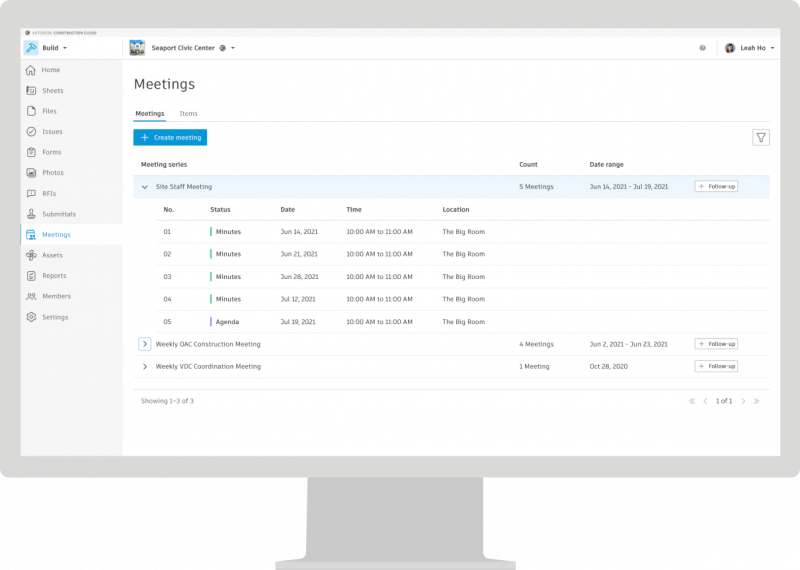
Autodesk Build and BIM Collaborate users now have a new, enhanced view of meetings to help better manage and address critical meeting items. In Project Home, users will have a snapshot of open, ongoing and overdue meeting items assigned for the project as well as to them as an individual. In the Meetings tab, users will have two enhanced views. The Meetings view will group all meetings by series, making it easier to manage and track all relevant meetings. The Items view pulls out items from all meetings and allows users to filter by flagged items, status, assignee, and due date, ensuring that critical action items get addressed and resolved.
Learn more about Enhanced Meeting Views here.
Document Management Releases
Document Management | Custom Attributes in Project Templates
Setting up a common data environment on the Autodesk Construction Cloud platform is now easier and faster with the ability to add file custom attributes to project templates.
Project Lifecycle | Sheet Sharing Across Accounts
Autodesk Construction Cloud platform users can how easily share sheets across different accounts. This helps gives teams the ability to share sheets with other external team members, like subcontractors or owners, who need access but are not a part of the main account. Sharing data across the entire project team is a critical part of ISO 19650 compliant workflows, and this release is the start of building out more data and file sharing functionality across the platform.
Cost Releases
Cost | Custom Tax Calculations*
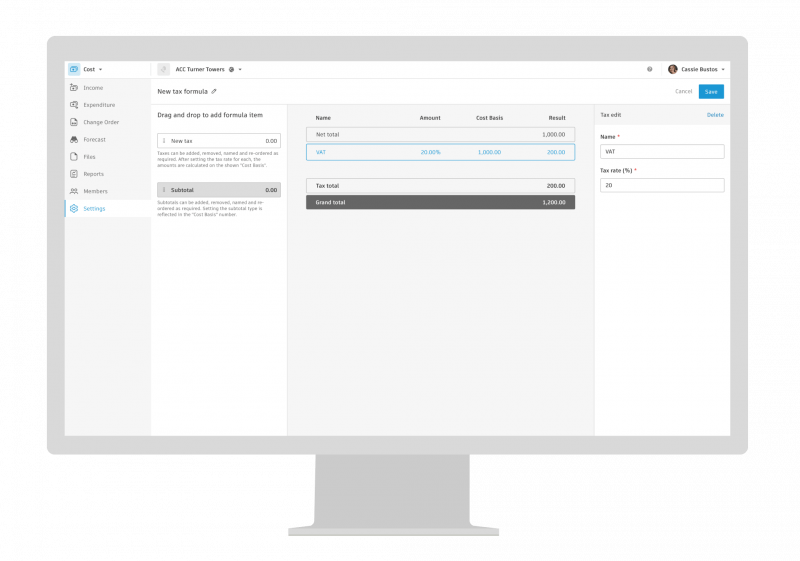
Save time, reduce the risk of error, and have a more accurate view of cashflow with Autodesk Build’s new custom tax calculation feature. This feature allows teams to create multiple tax formulas and easily apply them to contracts, payment applications, and change orders. In addition, the tax information will show in generated cost documentation to comply with requirements.
Project Management Releases
Meetings | Edit Meeting – General Information on Mobile
Autodesk Build users can now edit general meeting information on mobile including meeting title, date, time, and location. Additionally, users will be able to change the meeting status from Agenda to Minutes on their iOS or Android devices through the mobile application.
Meetings | Reorder Meeting Items & Topics*
Autodesk Build users can now easily reorder meeting items and topics, making it easy to customize and organize all project information within meetings.
Meetings | Create an Issue from a Meeting*
Autodesk Build users can now create an Issue right from a meeting instance. When adding an Issue as a reference to a meeting item, users will have the option to create an Issue, streamlining the process and ensuring that all issues are addressed.
RFIs | Custom Fields
On each project, Project Admins can create custom fields for the RFI. To ensure the right information is collected, the custom field can be numeric, text, or a list of values. This allows for greater customization of RFIs and ensures that all critical data is tracked and easily found.
RFIs | Embed PDFs in RFI Reports
When exporting RFI reports, Autodesk Build users can embed up to 10 pdf attachments within the report, helping to increase visibility to critical RFI information.
RFIs | RFI Settings: View Closed RFIs
On each project, Project Admins can configure RFI settings to provide access for all project team members to view closed RFIs or limit the access to stakeholders involved in the specific RFI. This allows Project Admins to adhere to company and project standards for data visibility.
RFIs | Project Templates
Within a project template, Project Admins can now configure RFI permissions, select desired workflow, create custom fields, and set other advanced settings. This makes it easier to set up new projects and adhere to company standards.
Submittals | Custom Types
For each project, Autodesk Build users can now add in custom submittal types or remove the preset types that are not required. This ensures all submittal information is correctly classified.
Field Collaboration Releases
Photos | Autotags for Photos [beta]
Autotags for photos is now in beta and visible to all Autodesk Build users. Autotags leverages machine learning to automatically add labels or tags as metadata to photos uploaded to projects. In this initial phase, Autotags is focused primarily on progress photo keywords including rebar, electrical cabinets, ductwork, ceiling framing, and floor finishes to name a few. This feature helps project teams quickly organize, filter, and find critical construction project photos.
Photos | Photo Viewing Enhancements [coming soon]
When looking at project photos in the Gallery, users will be able to easily zoom in on a picture, and the photo details will be shown in a more efficient way.
Photos | Reverse Referencing
Users often add photo references to forms, assets, or other items. After this release, the reference can be added the other way around as well — directly from a photo. When opening a photo in the gallery, members will have the option to link an existing asset, form, sheet, or submittal.
Data & Intelligence Releases
Data Connector | Reviews Data & Document Management Power BI Template*
Both BIM 360 and Autodesk Construction Cloud platform users can now extract document review data using Data Connector. This release adds to the document management related data extractions, including previously released sheets and transmittal data. This way teams can create custom dashboards in their own BI tools to better optimize document management workflows including driving better review processes.
Data Connector | Schedule Daily Refresh*
Both BIM 360 and Autodesk Construction Cloud platform users can now schedule extracts using Data Connector on a daily basis. This allows teams to get new data — refreshed every day — for use in other BI tools to ensure they always have the most up to date information.
Data Connector | Power BI Connector on EU Servers
Both BIM 360 and Autodesk Construction Cloud platform users can now use the Power BI Connector in both US and EU accounts. Previously the connector early access was available only for US accounts.
Reports | Report Automation by Company
Autodesk Construction Cloud platform users can now automatically generate Issue Summary and Issue Detail reports that are specific to individual companies. Prior to this release there was not an easy way to see an overview list of which companies had open issues. Now project leaders can run issue reports and distribute specific reports to each company to better manage issues and improve resolution rates.
Reports | Issue Status Summary
A new Issue Status Summary report is now available in BIM 360 and will be coming out shortly for the Autodesk Construction Cloud platform. This new report highlights a list of issues by company and gives an overview of how many are unresolved, overdue, open, answered, closed, etc. This helps teams get better visibility into issue status for each company and promotes resolution.
Insights | Additional Partner Cards*
Several new partner cards have been added to the card library in both BIM 360 and Autodesk Construction Cloud platform. The Box, Progess Center, Aespada, Sitekick, Daqs.io, Join.Build, OneConstruct, AgileHandover, and Novade partner cards will have their own branded card. The following list of partner cards are accessible through copying and pasting links into the generic partner card; Airtable, Embneusys, Hoyst, OpticVyu Construction Camera, and Quickbase.
Project Closeout and Handover Releases
Handover | As Built Export [coming soon]
The As Built Export feature in Autodesk Build improves the handover process by giving teams the ability to easily filter, find and export all relevant as built information including Sheets, RFIs, and Submittals, as well as carrying over any links to other related documents — like files or photos. With the elimination of manual processes used in the past, this feature not only speeds up the handover process, but it also improves the accuracy of handover documentation and increases overall client satisfaction.
Assets | Submittal Linking
In Autodesk Build users can now directly link submittals and asset and view submittal details from within the Assets tool. This helps connect data across workflows and allows project teams to easily access relevant information to a particular asset in a timely way.
Assets | Configuration Data in Project Templates
Autodesk Build users now have the ability to add asset configurations to a project template. This includes asset categories, status sets, custom attributes, category to custom attribute mapping, and category to status set mapping. With this capability, teams can speed up project start up and standardize asset tracking and commissioning processes.
Assets | Activity Log [coming soon]
Within the asset flyout panel, Autodesk Build users will now see an option to view an ‘Activity Log’, which shows a list of changes associated to that specific asset. Information includes creation date, changes to attribute values, the user or company that made the change, as well as any additions or removals of references. This activity log will help teams better understand the history of an asset to make more informed and timely decisions.
Progress Tracking Beta [coming soon]
Progress Tracking is a new set of features in Autodesk Build enabling users to track installation activities directly on sheets. Tracking accurate work progress data on projects helps to avoid delays and cost overruns. With Progress Tracking markups, teams can see work progress status at a glance, directly on a sheet. And the dashboard provides a comparable and exportable overview of work progress data, which helps teams to see where they can improve their productivity.
Progress Tracking Beta will be available for Autodesk Build customers starting from the end of July. Project admins will be able to request access to the beta via a pop-up message within the Sheets tab.
Stay in the Know for More Autodesk Construction Cloud Product Updates
Learn more about all updates across Autodesk Construction Cloud this month in our blog.
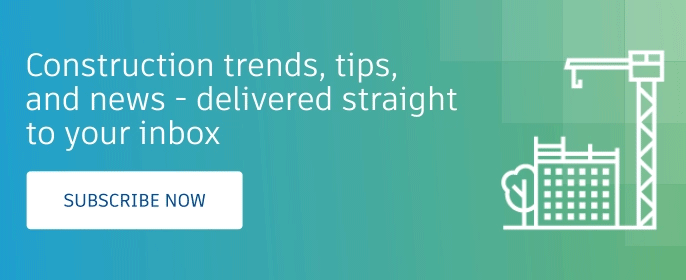
The post Autodesk Build Gets 20+ Product Updates, Features, & Enhancements appeared first on Digital Builder.
Digital Builder Ep 17: 3 Key Takeaways on Collaboration Best Practices in Construction
In the AEC industry, it’s not uncommon to have several different companies — sometimes 20 or more — working on the same project. Dozens of people, each with their own priorities and agendas, are involved in decision-making. Because of this, working together can get complicated — even heated, in some cases.
That’s why communication and collaboration are crucial in AEC. When everyone involved in a project is on the same page, the entire process runs smoothly and you’ll see better outcomes all around.
On Episode 17 of Digital Builder, Eddie Campbell, COO at ABSI (Accelerated Building Solutions, Inc.) and Tyler Campbell, Vice President, also at ABSI, join us to discuss how construction pros can increase cooperation within projects. They’re also co-hosts of the Construction Brothers Podcast, a show that delivers fresh ideas that industry professionals can use to improve their careers, projects, and people.
As a construction company that provides modeling and detailing services, Eddie and Tyler often sit ‘down the chain’ in the projects they work on. This gives them a unique perspective on the interactions between stakeholders and how collaboration can be improved.
The topics we touched on include:
- Ways to improve the bidding process
- Effective management styles
- Where subcontractors are empowered to improve collaboration
- Tips for successfully navigating contract disputes
“The thing that has gotten me out of the most trouble during my career whenever things get heated is going and talking with the other person; looking somebody in the eye is always helpful.” — Tyler Campbell
New Episodes Every Two Weeks
Digital Builder is hosted by me, Eric Thomas. Remember, new episodes of Digital Builder go live every two weeks. You can hear more episodes like this one by subscribing to Digital Builder on Apple Podcasts, Spotify, Stitcher, Google Podcasts, or wherever you listen to podcasts. You can also subscribe to our email list with the form below so you’re the first to hear when new episodes are released:
3 Takeaways on Collaboration Best Practices in Construction
Here are three best practices that construction pro’s should consider implementing to ensure smooth communication and collaboration in their projects.
1. Reduce barriers to accessing important information
Teams that lack easy access to key project info will struggle to articulate their needs due to a lack of confidence in next steps. With risk mitigation as a top priority in any construction project, confidence in decision-making is key. This is why owners should encourage and enable more transparency throughout a project. This is especially important during the design phase. When stakeholders have more visibility into design progress, they can provide meaningful input earlier in the process, which saves time and improves project outcomes.
“After having spoken with a group of owners recently, I think the number one thing that we need to work on as an industry is transparency. That’s one thing that owners desire, particularly in design,” says Eddie.
To truly open up lines of communication, you need to instill a sense of trust and collaboration. Many construction professionals focus on protecting themselves first when getting into new projects. This needs to shift into a collaborative mindset if teams want more transparency.
As Tyler puts it, “It’s the [self-first mindset] that has caused us to really have this brokenness in the industry that I see.”
“I feel like the trade aspect of things is that we’re pushing these designers and we’re giving them great tools. But the designers still don’t quite know how a building goes together in a lot of ways,” says Tyler.
“I think a big push for us is saying, ‘Alright, let’s get passionate about preaching that this is how we build now.’ The only thing that will drive better design is a better understanding of how the systems work.”
What this boils down to that is teams and individuals should help designers and stakeholders understand what truly goes into constructing a building. This is the “rising tide lifts all boats” mentality, and it’s a good one.
2. Leadership should empathize with processes that aren’t working
Empathy and humility go a long way in collaboration. This is especially important when leading by example. By taking time to understand where other stakeholders are coming from, you’ll come up with better solutions on the same timeline, if not faster, and reduce the stress caused by lack of alignment.
If a process isn’t working, for example, it’s on leaders to recognize and correct the course.
“Being humble enough to change our processes is something that, I think, we’re going to continue to have to go through over the coming years as we find new ways of delivering projects under these demanding schedules,” says Eddie.
Regular check-ins can also help teams better understand each other and ultimately be more collaborative. In fact, initiating one-on-one conversations with stakeholders can be incredibly valuable.
As Tyler puts it, “the best teams are the ones that do check-ins. They don’t need to be like, ‘Big meeting, big everything.’ Just pick up the phone and talk to somebody. Ask them how it’s going and what you can help them with. Let them know that you’re there when they need you. It’s not complicated, but slowing down to do that is sometimes pretty hard.”
3. Invite feedback from more people early in the process
Give more contributors a seat at the table. This doesn’t mean making everyone a key stakeholder. Rather, it’s about inviting contributions from others up and down the chain. Doing so will give you a more holistic understanding of what needs to be done.
Getting everyone on board early ensures that stakeholders have a clear idea of project scope, timelines, and deliverables. That group knowledge helps reduce miscommunication and delays down the road.
“The best projects that I’ve gotten the chance to be a part of had project managers, senior project managers, superintendents that were seeking to understand the problems,” shares Eddie.
According to him, these projects were a refreshing experience because he and his team sit down the chain, and typically don’t get a seat at the table.
Eddie continues, “Those have been the best experiences for me, where people are invited to the table, and then problems are solved, rather than fended off.”
His sentiment is clear. Whenever project teams invite feedback from more stakeholders, they tend to be more collaborative and effective in achieving their goals.
Listen to the full episode for more AEC insights
In addition to collaboration best practices, we explored other topics with Eddie and Tyler, including how to improve the bidding process and what management styles work best in construction projects. Check out the full episode on your favorite podcast platform.
- Apple Podcasts
- Spotify
- Stitcher
- Google Podcasts
- or wherever you listen to podcasts
The post Digital Builder Ep 17: 3 Key Takeaways on Collaboration Best Practices in Construction appeared first on Digital Builder.
Nominations Now Open: 40 Under 40: Construction Champions of 2021
Submit a Nomination by September 17
The people working in AEC truly are the backbone of our industry. This was made abundantly clear by the events of last year, as well as the first half of 2021. The construction industry has gone through incredible change, and we’ve come out stronger than ever because of the creativity, innovation, and hard work of construction professionals all over the world.
Here at Autodesk, we’re honored to celebrate and spotlight the innovators and changemakers helping to advance the AEC industry. That’s why we’re thrilled to announce that nominations are now open for the fourth annual 40 Under 40: Champions of Construction!
From August 17 to September 17, we encourage you to nominate AEC professionals who you believe have made a tremendous impact on the industry. Forty nominees will then be selected and included in Autodesk’s 40 Under 40: Champions of Construction list.
NOMINATE TODAY
Who to Nominate: 40 Under 40 Nomination Criteria
Autodesk’s 40 Under 40 will be a list of shining (and rising) stars in the industry. It will recognize construction professionals under the age of 40 who are making waves in the AEC field for their creativity, forward-thinking, and dedication, particularly over the last several months.
Nominees must meet the following criteria:
- Someone who has made a big impact in their role in 2021.
- A professional who has demonstrated exceptional leadership.
- An industry pioneer who has implemented or managed technology with a major impact on a project and their company.
Got someone in mind? Be sure to hit that nominate button on or before the 17th of September!
Please note that a panel of unbiased experts review hundreds of nominations every year for 40 Under 40: Champions of Construction. Every nomination is carefully reviewed against the program criteria, however, only 40 of the most exceptional nominations will be chosen.
SUBMIT a NOMINATION
When Will the 40 Under 40 Winners Be Announced?
The list will be announced before the end of the year, so keep an eye out in your email. Better yet, subscribe to the Autodesk blog to get alerted about news and updates.
A Look at Previous Winners
Whoever makes it to this year’s list will be in great company! The 40 Under 40 alumni have done — and are continuing to do — some amazing things to take the industry to new heights. Have a look below.
- 2020
- 2019
- 2018
Your relatives, colleagues, and even yourself could be a part of this year’s list, so get those nominations in while you have time!
And be sure to subscribe to the blog so you don’t miss any updates on this year’s 40 Under 40: Champions of Construction list.
We love reading the stories in every submission and can’t wait to see who you nominate!
NOMINATE NOW
The post Nominations Now Open: 40 Under 40: Construction Champions of 2021 appeared first on Digital Builder.
Did you miss our previous article…
https://www.arizonasolarsociety.com/?p=1133
Behind the Build: Interview with Jacob Freitas, Senior Project Manager, Level 10 Construction
Find the people that are going to support you, help answer questions, and mentor you. Those are the teams you want to be on and the type of team you want to build.
To see the greatest results from technical solutions, you’ll need to get all users and stakeholders on board. While there are many factors that play into successful technology adoption, there’s one component that every initiative must have: a fearless champion. Enthusiastic, committed champions help drive the buy-in you need from stakeholders while getting support from the people who will use the new technology. Building internal advocacy ensures full-scale adoption.
As a Senior Project Manager, Jacob Freitas is one of those fearless champions, pushing innovation and productivity forward at Level 10 Construction. We recently spoke with Jacob about his experience with planning and construction, how the project manager role is evolving, and how Level 10 leverages technology to solve challenges. Read his story below.
Tell us a little bit about Level 10 and what you specialize in.
We’re headquartered in Sunnyvale, California with a few more offices in San Francisco, San Diego, and Austin, Texas. Level 10 Construction was actually founded in 2011 by industry veterans with this shared vision of delivering construction projects at the highest level. And we’ve been able to deliver successful projects across several market sectors thanks to our different regional offices. Our projects have run the gambit—advanced technology, corporate, education, housing & mixed use, biotechnology, entertainment, healthcare and gaming & hospitality.
Walk us through your career. What led you to become Senior Project Manager?
I started back at Cal Poly in the summer of 2005 studying city-regional planning. My first summer after Cal Poly, I had an internship with a home builder, which was when I realized I wanted to go into construction.
So, I pursued internships in the field and worked with Rudolph and Sletten for six months doing co-op. That was all around 2008 when the economic downturn happened and new construction opportunities dried up. I ended up getting more work experience related to my planning background. From 2009 to 2011 I worked on energy management and greenhouse gas mitigation for Mazzetti, an engineering firm out of San Francisco.
A lot of what I focused on during those three years were energy-related projects such as efficiency upgrades, solar installation and fuel cells. The primary client I supported was Kaiser Permanente, with the goal of reducing their environmental footprint, primarily focused on the greenhouse gas emissions associated from their facility operations.
In 2011, a former boss of mine reached out to me to see if I was still interested in the construction space. This November will be nine years for me here at Level 10 Construction.
As construction evolves, how do you see the role of Project Manager changing?
Today, I see a lot of the same mistakes being repeated, and it’s due to a lack of knowledge sharing. Hopefully, in the next decade, sharing lessons learned will become easier with the advent of new technology.
Looking forward, I’m excited to see how our industry shares information, not only internally in organizations but peer-to-peer, and how we can try to be more effective at it.
In terms of existing work products, I want to leverage that existing work product. I don’t want to reinvent the bid package or the spec section or this or that detail. There’s no reason to reinvent it if it’s already been figured out; however, many times it comes down to not knowing where that information resides.
Looking forward, I’m excited to see how our industry shares information, not only internally in organizations but peer-to-peer, and how we can try to be more effective at it.
What project are you most proud of working on in your career?
I would say the Facebook west campus job we worked on from 2012 to 2014. At that time, we were still relatively small as an organization. That was around a $400 million project. As a senior engineer, I was managing all the MEPF trades, which was a $100 million dollar scope. That project felt like the equivalent of two or three projects rolled into one, and we delivered.
The project was super cool, especially considering its size, scope, and complexity. That’s part of the reason I’m here doing what I’m doing today is because of that experience. Not everyone has the opportunity to manage mechanical, electrical, plumbing, food service, fire protection trades early in their careers. The project allowed me to advance faster.
What are the biggest challenges you face in your role? How does technology help you meet these challenges?
Having a centralized platform that the whole team can be on. That has always been a challenge. Recently there’s been a number of platforms that check that box.
Autodesk Build is taking the right approach with getting the whole project on board. I think that model is what we’ll continue to see moving forward.
At Level 10, we also don’t print many drawing updates anymore. The only drawing sets we have are pretty much just the permit sets. It’s key to have the most recent version of all the information on hand, whether it’s an RFI or submittal or drawing. I can carry it around on my iPad and in my safety vest.
You just couldn’t do that 20 years ago, right? Instead, everyone would just be working with incomplete information. Now, one person can basically manage to keep the whole set current for the entire team—for 100 or 200 people.
The concept of reality capture from 360 video walks has also become really beneficial. Companies like OpenSpace, StructionSite, and DroneDeploy allow users to quickly capture current site conditions and share project information with various stakeholders for coordination. Think Google Street View for the jobsite.
Aside from just doing reality capture, some of these companies use photogrammetry to create 3D models of the site conditions. These can be used for things like soil stockpile quantity tracking and, more recently with OpenSpace, progress tracking of TI trades such as framing and drywalls. At a high level, eventually, you’ll be able to walk through the project and capture 360 video then upload it. The software will take that walk-through video and generate a point cloud, which is a geometrically accurate digital version of the built environment you’re looking at in real life. That point cloud then gets compared to your BIM models and schedule. This will give you percent complete by trade, trade-specific scope items, and how the completion of those items are tracking against the project schedule. That’s something that’s always hard to do on larger projects.
When you think about the future, what are your plans to advance innovation and productivity at Level 10?
Internally, everyone’s definitely supportive of these things, but part of it is my own internal quest to be better at things because I see it could be better. The owners of our company are all very knowledgeable, and they’ve been doing this for 30, 40 or more years. So, sometimes it’s scary to face questions like, “We’re going to do what? How? We never did it like that. How are you going to do this?”
Don’t be afraid to ask questions. I constantly ask questions. Don’t be afraid to be the idiot in the room. Raise your hand…understand why you’re doing things. Don’t just do things because someone told you to.
Right now we’re tracking layout with a Dusty Robotics Field Printer robot, using all of our coordinated BIM models and shop drawings. The framers are going to do a Level of Detail (LOD) 350 model in Revit and coordinate with all the MEPs. The grand plan is to export all that information into a single layout file. Each trade will still be responsible for their own layouts, but the bulk of the layout will be exported by trade, given to Dusty, consolidated into a single layout file and multi-trade layout completed through Dusty Robotics Field Printer.
For example, rough openings in walls, bottom track locations, drops for lights, etc., you stack it all in the system and it lays it out. Some of the framers are already enjoying it and some of the MEPs are already seeing the value in it. It should greatly improve the speed at which a project can complete layout and provide additional opportunities to spot problems before things are built out. We had a demo of it out in the field and it seemed effective.
What advice would you give to the next generation of men and women entering and preparing for the future of the industry?
Don’t be afraid to ask questions. I constantly ask questions. Don’t be afraid to be the idiot in the room. Raise your hand and ask questions a lot. You need to understand why you’re doing things. Don’t just do things because someone told you to do them. Figure out why you’re doing it because there’s usually a reason why you’re doing it. If you don’t understand the “why”, it’s not going to click a lot of times. That’s true with anything in life, but you have to ask questions and figure it out. Find the people that are going to support you, help answer those questions, and mentor you. Those are the teams you want to be on and the type of team you want to build.
The post Behind the Build: Interview with Jacob Freitas, Senior Project Manager, Level 10 Construction appeared first on Digital Builder.
Did you miss our previous article…
https://www.arizonasolarsociety.com/?p=1127
Digital Builder Ep 21: Bringing a Construction Data Strategy to Life
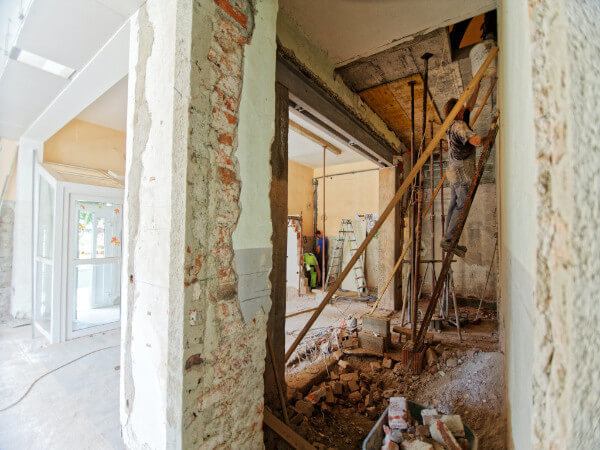
As the speed of decision-making in our industry continues to increase, data can help us not only make faster decisions, but better decisions too. Research shows that incredible opportunities exist for those who build a strong strategy for managing their data. Plus, with a well-designed data strategy, you’ll be setting yourself up to leverage more advanced technologies further down the line.
Listen to the episode now
You can also listen to this episode on Apple Podcasts, Spotify, Stitcher, Google Podcasts, and anywhere else you get your podcasts.
On this podcast episode
Jay Bowman, Managing Director of Research & Analytics at FMI, and Andy Leek, Vice President – Technology & Innovation at PARIC Corporation, join the show to discuss the many benefits of having a strong data strategy in construction.
What we discuss:
- The state of construction data today
- How to make sure you’re capturing useful data
- How a baseline of data strategy leads to more advanced technologies
- Improving data literacy in construction
- The future of data in construction
“Data strategy may seem optional today, but it’s really going to be a requirement tomorrow.” — Jay Bowman, Managing Director of Research & Analytics, FMI
Podcast highlights from Episode 21
In recent years, many perceived the construction industry as being behind the curve with technology adoption. And while there once was some truth to that, it’s clear that builders are now embracing technology at an incredible pace.
In fact, the AEC industry has done a tremendous job in closing the technology gap. JLL’s State of Construction Tech 2020 report found that in the past year, the construction industry compressed three years of technology adoption and growth into just nine months. And as Jay points out, venture capital investment “has grown ten-fold in the construction industry over the last decade.”
“I don’t know if there’s another industry where there’s really that much innovation going on. It’s actually a pretty exciting time for us,” he remarks.
In line with all this progress is a rise in the amount of data that we capture. Our research with FMI revealed that construction data has actually doubled in the last three years. So it’s not that we don’t have data—we do. We just need to make sure that we can trust the data and we’re able to put it to good use.
“What it’s coming down to now is the fact that we already have the technology,” says Andy.
“We are developing the data, and now it’s coming to a point where people need to know whether or not they can trust it. Is the cadence high enough that they can get information in a reasonable amount of time?”
This is where having a data strategy comes in.
A good data strategy enables teams to access reliable and trustworthy data so they’re empowered to work more productively, make smarter project decisions, and improve profitability. Having a data strategy in place also puts more time back into people’s lives, so they can focus on things that matter outside their primary responsibilities—both professionally and personally.
“I would like to think we get to a point where we are focused on the human side of things, in terms of helping people do a better job, to rest easier, and make sure they can go home on time and watch their kids play baseball,” remarks Andy.
“That way, they can truly have a life. People work to live, they don’t live to work.”
Four steps to building a data strategy
The conversation we had with Jay and Andy amplifies the most important takeaways from the data report we recently published, with FMI as our partner. This resource shares the findings we discovered from surveying nearly 4,000 AEC professionals on their data practices.
The report also sheds light on the actionable steps that construction firms are strongly encouraged to take when building their own data strategy.
Below is a quick summary of those steps, along with insights from Andy and Jay.
Step 1: Select a single point of focus
Companies with good data strategies have one thing in common: they all began by selecting just one area to focus on.
“In the case studies that we did, this was the common thread through everybody,” explains Jay. “No one tried to solve everything at one time, they chose one area of the organization where they could apply a solution.”
There are different ways to figure out the best point of focus. Andy recommends concentrating on places within the business where you already have measurable data.
“For us, we started in two basic areas—one was financial and the other was safety. And those were the two simplest places in our situation. We just decided to zero in on those particular areas and grow from there.”
You could also identify areas that would benefit most from data. Ask yourself, which component or department of the business would generate the most value if it had a data strategy in place?
Taking these steps narrows down the focus of your data strategy, so you can prevent being overwhelmed and get started quickly.
Step 2: Get employee buy-in to reduce hesitancy
You can’t have a data strategy without the support and commitment of other stakeholders. That’s why before rolling out your plans, ensure that you have buy-in from the right people.
According to Andy, the best way to do this is to “meet people where they’re at.”
“You’ve got to get them comfortable with the terminology. When you start throwing acronyms at people, they turn off immediately,” he adds.
When educating teams about data, make sure you’re doing it in a way that they can understand. You can do this by starting with the basics to create a foundational education.
Jay likens it to teaching someone how to drive.
“If I’m trying to teach someone to drive a car, I’m not going to tell them how an internal combustion engine works and how the metal comes together. I’m going to explain to them the gas pedal and the steering. I’m going to teach them how to use the brake.”
The same thing applies to your data strategy, he says. “We have to start at that ground level.”
You can also improve data literacy by making it easy and intuitive for teams to view and interpret data.
Over at PARIC, Andy says they did this by creating curated dashboards for their teams.
“We curated them based on their role or their phase in the project. That way, there are no endless bar graphs and pie graphs for them to try and noodle all the way through. They can easily see key insights relevant to them.”
Step 3: Standardize your data capture across all projects
The outputs or results of your data strategy will only be as good as the inputs entered into the system.
According to Jay, one of the killers of data integrity is having “multiple project inputs.”
“You would not realize that there are 30 different ways to spell the name of one supplier. Sometimes you can use all capital letters and sometimes you use just the regular capital at the beginning of the sentence… Those things, although they seem minor, actually add up and can complicate your project inputs.”
Having multiple processes is another problem, says Jay. When your data capture and QA processes aren’t uniform, you are hindering your ability to collect high-quality data and prevent your teams from gaining useful insights.
This is why standardization is so important. Before capturing and analyzing information, everyone in the organization must first agree on the formats, systems, and processes to use.
Step 4: Keep project data in a common environment
Using disconnected software and hardware isone of the top reasons for having bad data, says Jay.
In order for your strategy to be successful, you must ensure that all your data lives in one, centralized location that can be accessed by the right people. In other words, you need a common data environment (CDE).
As Jay puts it, “Standardization and creating a common data environment stood out more than anything in terms of what firms could do to address data integrity issues and limit the amount of bad data.”
If you haven’t already, decide on a single platform on which to host and analyze your data. Adopting a CDE not only ensures that teams have access to the right information, it also guarantees that they’re all working from the same data. With a CDE, project stakeholders can remain well-informed and they have the ability to collaborate more effectively.
The bottom line with data strategy
A formal data strategy gives companies a competitive advantage in today’s AEC landscape.
So, don’t wait too long to roll out a strategy in your firm. Bets are your competitors are already making progress. Start by identifying a specific area to focus on and getting buy-in from your team. From there, make sure you establish standardized data processes and adopt a CDE to keep everyone on the same page.
New podcast episode every two weeks
Digital Builder is hosted by me, Eric Thomas. New episodes of the Digital Builder podcast go live every two weeks.
If you can’t get enough of construction tech and data strategies, catch the full podcast episode of Digital Builder to hear more from Andy and Jay.
Listen to the Digital Builder Podcast on:
- Apple Podcasts
- Spotify
- Stitcher
- Google Podcasts
- or wherever you listen to podcasts
The post Digital Builder Ep 21: Bringing a Construction Data Strategy to Life appeared first on Digital Builder.
Weston Homes plans £100m London flats scheme
Volume house builder Weston Homes has bought part of a former textiles dyeing factory complex in south east London for a £100m multi-storey flats scheme.
The 4.6 acre Dylon factory site will be transformed with a 254 apartments scheme with, undercroft basement parking, and children’s play space within landscaped gardens.
The site already benefits from full planning consent, granted last Spring, allowing construction to start in late 2022 with a 20 month build programme.
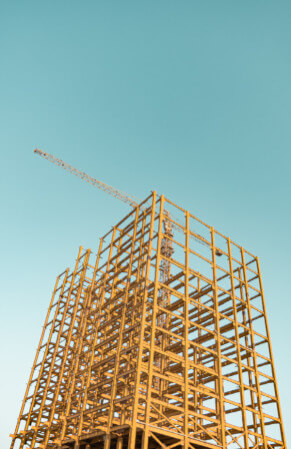
It forms the second phase of the redevelopment of the Dylon works following on from 223 built to Crest Nicholson undertaken in 2017.
The contemporary buildings are designed for first time buyers and will have full height windows, balconies and tiered roofscapes complete with feature London Yellow Stock brickwork, providing a connection to nearby residential buildings.
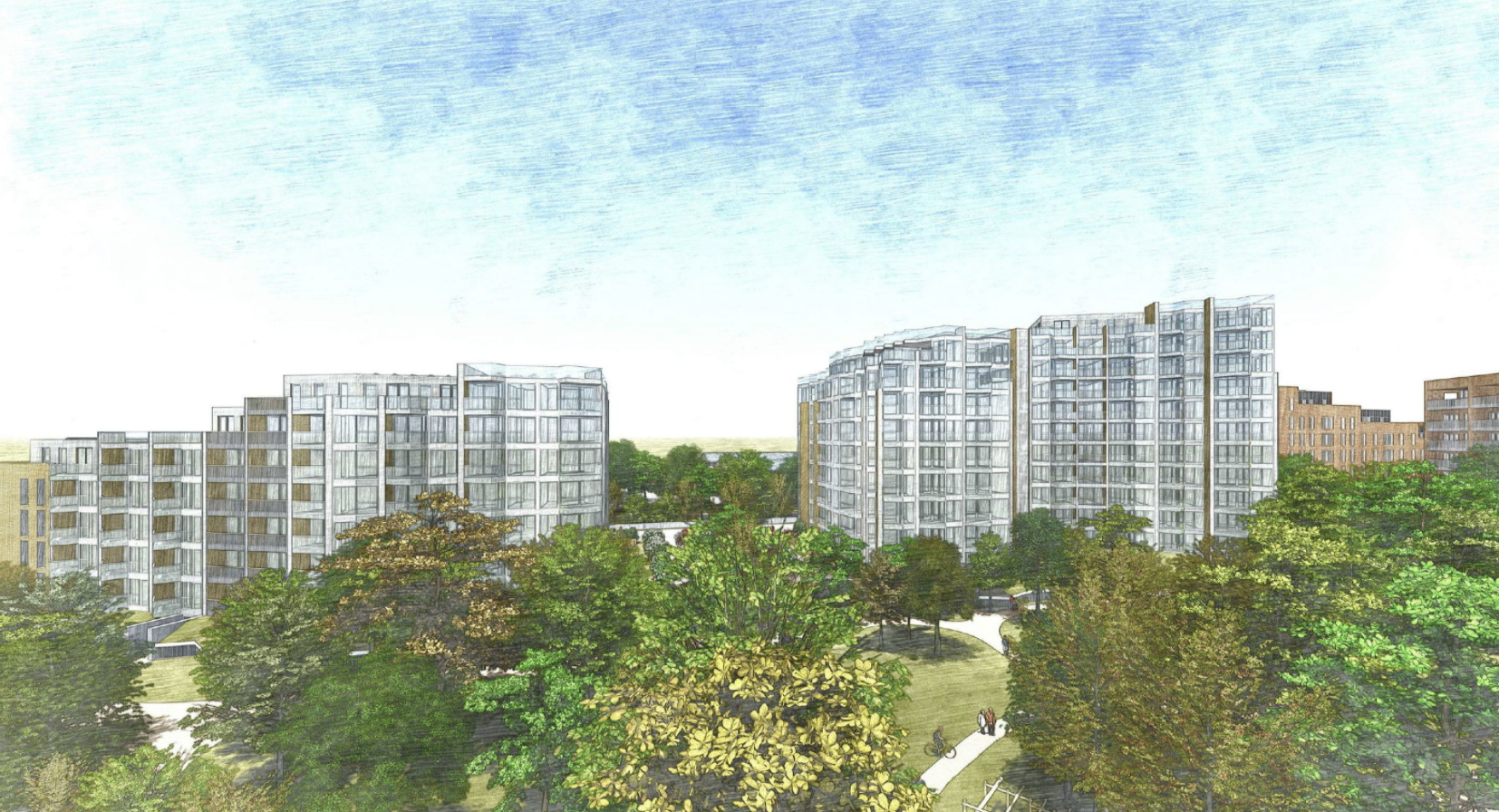
Bob Weston, Chairman and Manging Director at Weston Homes said: “This new outer London development is part of our ongoing major growth and expansion. The business has a highly diverse range of developments, including a series of major landmark schemes commencing and many others in the pipeline.”
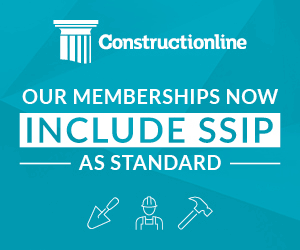
Over the last five years, Weston Homes has purchased land sites for over £2 bn worth of residential and mixed use development across outer London and the South East.
This includes 20 current active sites and over 7,500 new homes in the pipeline including traditional housing and large scale urban regeneration projects.
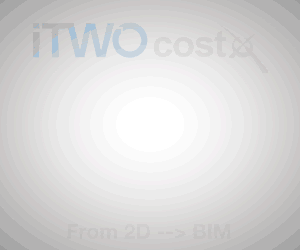

Did you miss our previous article…
https://www.arizonasolarsociety.com/?p=1081
£35m Nottingham art school gets green light
Plans for a £35m university building in Nottingham city centre have been given the planning go-ahead
Work will start early next year on the nine-storey block, which will house Nottingham Trent University’s School of Art and Design.
Bowmer & Kirkland and GF Tomlinson are understood to be in the bidding for the project which has been designed by architect Hawkins Brown.
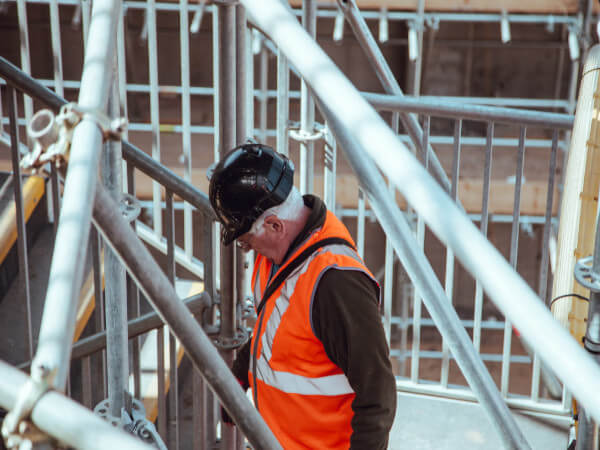
The planned building at 40–42 Shakespeare Street will provide a variety of workspaces for designing and making, collaboration areas, specialist studios and labs.
The building has been designed to achieve BREEAM ‘Excellent’ and DEC ‘A’ rating.
Design decisions, such as the use of post-tensioned concrete slabs and ceramic cladding, have helped to reduce their carbon impact using Hawkins\Brown’s self-developed, open-source H\B:ERT software.
Nottingham School of Art and Design project team
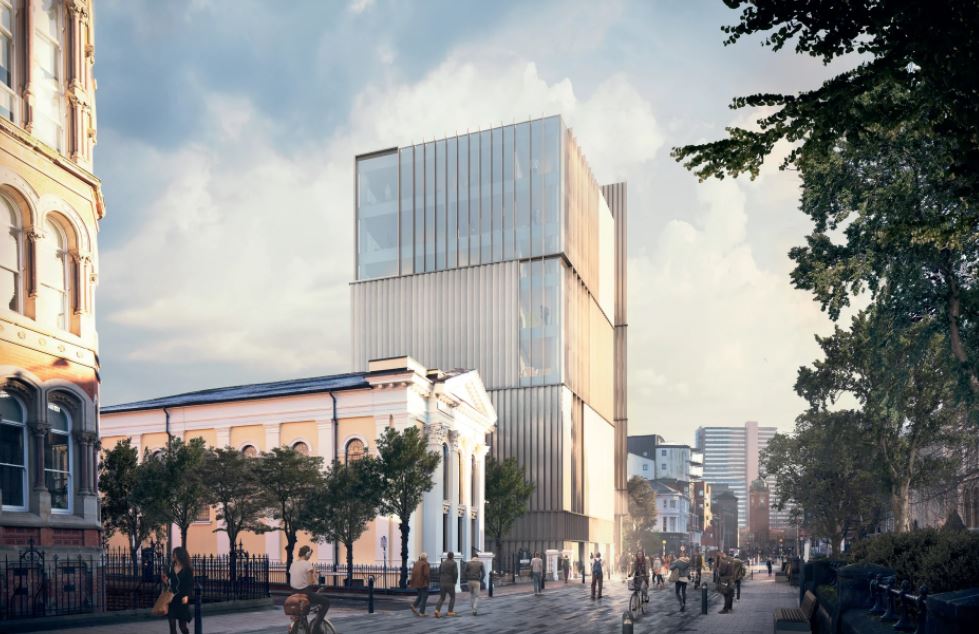
Architect: Hawkins Brown
Structural & Civil Engineer: Mott Macdonald
MEP engineer: Waterman
Carbon consultant: Hawkins Brown
Project Manager: Turner & Townsend
Cost consultant: Turner & Townsend
Fire Engineer: Arup
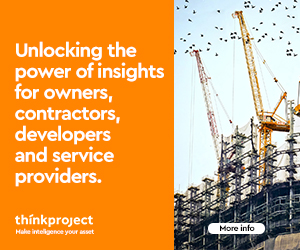
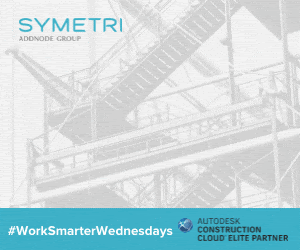
Did you miss our previous article…
https://www.arizonasolarsociety.com/?p=1054